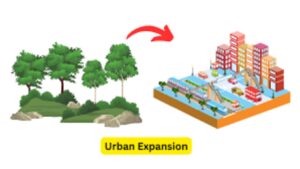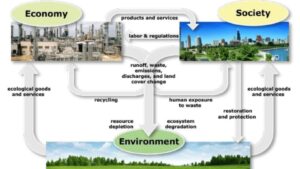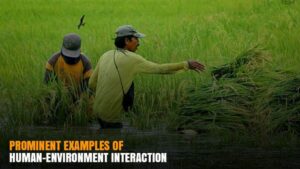Human Environment Interaction Definition
Human environment interaction definition is a fundamental concept in geography that examines the relationship between people and their  surroundings. It focuses on how humans adapt to, modify, and depend on the environment they live in. This dynamic interaction plays a crucial role in shaping societies and landscapes around the world.
surroundings. It focuses on how humans adapt to, modify, and depend on the environment they live in. This dynamic interaction plays a crucial role in shaping societies and landscapes around the world.
From ancient civilizations to modern urban centers, human environment interaction definition has been a driving force behind societal development. Whether through agricultural practices, industrial activities, or sustainable initiatives, humans continuously interact with their environment. These interactions can have profound impacts on ecosystems, climate patterns, and overall environmental quality.
Understanding human environment interaction definition is essential for addressing environmental challenges such as climate change, deforestation, and pollution. By examining how individuals and communities interact with their surroundings, we can develop more sustainable practices and policies to ensure a harmonious coexistence between humans and the environment.
As an expert in the field, I’ll delve into Human Environment Interaction and provide a simple explanation. When we talk about Human Environment Interaction, we’re referring to the relationship and impact that humans have on their surroundings. It encompasses how people adapt to, modify, and depend on the environment they find themselves in.
In simple terms, Human Environment Interaction examines how humans use natural resources like water, land, air, and minerals for  various purposes. Whether it’s building homes, farming the land, or extracting raw materials for manufacturing goods, our interactions with the environment shape both our lives and the world around us.
various purposes. Whether it’s building homes, farming the land, or extracting raw materials for manufacturing goods, our interactions with the environment shape both our lives and the world around us.
Understanding this concept is crucial as it highlights the interconnectedness between human activities and the health of our planet. By being mindful of our actions and striving for sustainable practices, we can strive towards a more harmonious balance between humans and their environment.
Understanding Human Environment Interaction
Exploring the concept of Human Environment Interaction delves into the intricate relationship between us, humans, and our surroundings. It’s not merely about how we impact the environment but also how nature influences us in return.
 When we alter our environment through activities like urbanization, agriculture, or industrialization, we directly affect ecosystems and natural resources. As a result, there can be both positive and negative consequences on biodiversity, climate patterns, and overall environmental sustainability.
When we alter our environment through activities like urbanization, agriculture, or industrialization, we directly affect ecosystems and natural resources. As a result, there can be both positive and negative consequences on biodiversity, climate patterns, and overall environmental sustainability.
For instance:
- Deforestation: By clearing large tracts of forests for development purposes, we disrupt habitats and contribute to global warming through reduced carbon absorption.
- Water Pollution: Discharging harmful substances into water bodies contaminates drinking water sources and harms aquatic life.
- Urban Sprawl: Expanding cities encroach upon natural landscapes, leading to habitat loss for various species.
Understanding this interaction is crucial for devising sustainable practices that balance human needs with environmental preservation. It  requires a holistic approach that considers long-term impacts and promotes conservation efforts across different sectors.
requires a holistic approach that considers long-term impacts and promotes conservation efforts across different sectors.
By recognizing the interconnectedness between human actions and the environment, we can strive towards creating a harmonious coexistence that benefits both present and future generations. This awareness empowers us to make informed decisions that prioritize ecological integrity while meeting societal demands responsibly.
As I delve into the concept of human environment interaction definition, it becomes evident that this dynamic relationship plays a crucial role in shaping our world. From urban areas to rural landscapes, HUMANS INTERACT WITH their surroundings in multifaceted ways that impact ecosystems, societies, and economies.
 Key Points
Key Points
- Interdependence: The interdependence between humans and the environment underscores how our actions can have far-reaching consequences. Whether through resource extraction, land use changes, or pollution emissions, our decisions shape the health and sustainability of the planet we call home.
- Adaptation: Humanity’s ability to adapt to environmental challenges showcases resilience and innovation. When faced with issues such as climate change or natural disasters, communities worldwide demonstrate a capacity for adaptation by implementing sustainable practices and technologies.
Noteworthy Examples:
- The Industrial Revolution: The Industrial Revolution marked a significant turning point in human-environment interaction. Rapid industrialization led to widespread pollution, deforestation, and habitat destruction, highlighting the need for responsible resource management.

- Urban Expansion: As urban areas expand to accommodate growing populations, urban planning plays a critical role in balancing development with environmental conservation. Strategies like green infrastructure and sustainable transportation aim to mitigate negative impacts on ecosystems while fostering livable cities.
In exploring human-environment interaction further, it is clear that fostering a harmonious relationship between people and nature is essential for long-term well-being and sustainability. By promoting stewardship of our environment through education, policy initiatives, and community engagement efforts, we can strive towards a more balanced coexistence with the natural world.
Factors Influencing Human Environment Interaction
When considering the complex dynamics of human environment interaction, several key factors come into play. These elements shape how humans interact with and impact their surroundings, influencing both the environment and society in return.
 Population Density
Population Density
One significant factor is POPULATION DENSITY. The concentration of people in a particular area affects resource consumption, waste production, and overall environmental strain. High population density areas often face challenges such as pollution, habitat destruction, and increased demand for resources like water and energy.
Technological Advancements
Another critical aspect is TECHNOLOGICAL ADVANCEMENTS. As technology evolves, so do our interactions with the environment. Innovations like renewable energy sources, efficient waste management systems, and sustainable agriculture practices can either mitigate or exacerbate environmental impacts depending on how they are implemented.
Socioeconomic Factors
SOCIOECONOMIC FACTORS also play a vital role in shaping human environment interaction. Income levels, education, access to resources, and cultural beliefs all influence how individuals and communities utilize natural resources, manage ecosystems, and respond to environmental challenges.
GOVERNMENT POLICIES have a profound impact on human-environment dynamics as well. Regulations regarding land use planning, emissions control, conservation efforts, and disaster preparedness can significantly shape how societies interact with their surroundings and work towards sustainability.
The looming threat of CLIMATE CHANGE is an overarching factor that affects all aspects of human-environment interaction. Rising global temperatures, extreme weather events, sea level rise – these consequences of climate change are reshaping ecosystems worldwide and forcing us to adapt our behaviors to ensure a more sustainable coexistence with the planet.
Impacts of Human Environment Interaction
In exploring the impacts of human environment interaction, it becomes evident that our actions have far-reaching consequences on the world around us. Let’s delve into how our interactions with the environment shape ecosystems, influence climate patterns, and affect overall biodiversity.
 Alteration of Ecosystems
Alteration of Ecosystems
Our activities such as deforestation, urbanization, and industrialization significantly alter natural habitats, leading to a loss of biodiversity and disruption in ecological balance. By transforming landscapes for agricultural or residential purposes, we inadvertently reduce the available space for wildlife to thrive. This disruption can result in species extinction, habitat degradation, and fragmentation.
Human activities like burning fossil fuels release greenhouse gases into the atmosphere, contributing to global warming and climate change. The rise in temperatures leads to melting ice caps, rising sea levels, more frequent extreme weather events like hurricanes and droughts. These changes not only impact ecosystems but also pose risks to human populations living in vulnerable areas.
Resource Depletion
The exploitation of natural resources such as water, minerals, and forests at unsustainable rates depletes these essential elements faster than they can be replenished naturally. This overconsumption threatens future generations’ ability to meet their needs adequately and compromises the delicate balance within ecosystems.
Strategies for Sustainable Human Environment Interaction
When considering STRATEGIES FOR SUSTAINABLE HUMAN ENVIRONMENT INTERACTION definition, it’s crucial to focus on practices  that promote harmony between humans and their surroundings. One key approach is implementing renewable energy sources such as solar or wind power. By reducing reliance on fossil fuels, we can minimize environmental impact while meeting energy needs effectively.
that promote harmony between humans and their surroundings. One key approach is implementing renewable energy sources such as solar or wind power. By reducing reliance on fossil fuels, we can minimize environmental impact while meeting energy needs effectively.
Another effective strategy is promoting sustainable agriculture techniques like crop rotation and organic farming. These methods help maintain soil fertility, conserve water resources, and reduce the need for harmful pesticides and fertilizers. Encouraging local food production and consumption also plays a vital role in minimizing the carbon footprint associated with food transportation.
Investing in green infrastructure projects, such as building green roofs or creating urban green spaces, can enhance biodiversity, improve air quality, and mitigate the urban heat island effect. By incorporating nature into city planning, we create healthier environments for both humans and wildlife.
Educating communities about waste reduction, recycling programs, and responsible consumption habits is essential for fostering long-term  sustainability practices. Empowering individuals to make eco-conscious choices in their daily lives contributes significantly to preserving the environment for future generations.
sustainability practices. Empowering individuals to make eco-conscious choices in their daily lives contributes significantly to preserving the environment for future generations.
Through a combination of these strategies and continuous innovation in sustainable practices, we can strive towards a more harmonious relationship between humanity and the environment we inhabit. Remember – small changes add up to significant impacts when it comes to protecting our planet!
Reflecting on the intricate relationship between humans and their environment, it becomes evident that human-environment interaction is a  multifaceted concept that shapes our lives in profound ways. Through a delicate balance of adaptation and impact, we navigate through environments, both natural and built, influencing and being influenced by them.
multifaceted concept that shapes our lives in profound ways. Through a delicate balance of adaptation and impact, we navigate through environments, both natural and built, influencing and being influenced by them.
In this article, we’ve explored how human activities can alter ecosystems, leading to consequences such as climate change, deforestation, and pollution. Conversely, we’ve also seen how the environment molds human behavior and development, affecting everything from cultural practices to urban planning.
Ethical Considerations in Human Environment Interaction
In exploring the dynamics of human environment interaction, it’s crucial to delve into the ethical considerations that arise from these complex relationships. As we navigate through this intricate web of interactions between humanity and the environment, we encounter  various ethical dilemmas that prompt us to reflect on our responsibilities as stewards of the planet.
various ethical dilemmas that prompt us to reflect on our responsibilities as stewards of the planet.
One significant ethical consideration revolves around sustainability. How do our actions today impact the ability of future generations to meet their needs? It’s essential to strike a balance between fulfilling our current requirements and preserving the environment for posterity. This dilemma often pits short-term gains against long-term sustainability, forcing us to reconsider our consumption patterns and resource utilization strategies.
Another critical aspect is environmental justice. Not all communities bear the same brunt of environmental degradation caused by human activities. Marginalized groups and vulnerable populations often suffer disproportionately from pollution, deforestation, or climate change impacts. Addressing these disparities requires a concerted effort to uphold principles of fairness, equity, and inclusivity in environmental decision-making processes.
Moreover, cultural preservation plays a vital role in shaping ethical considerations within human-environment interactions. Many  indigenous communities have deep-rooted connections to their lands, viewing nature not just as a resource but as an integral part of their identity and heritage. Respecting traditional knowledge systems and incorporating indigenous perspectives into conservation efforts are essential steps towards fostering mutual respect and understanding.
indigenous communities have deep-rooted connections to their lands, viewing nature not just as a resource but as an integral part of their identity and heritage. Respecting traditional knowledge systems and incorporating indigenous perspectives into conservation efforts are essential steps towards fostering mutual respect and understanding.
In conclusion, navigating the complex landscape of ethical considerations in human environment interaction demands a nuanced approach that balances economic development with ecological preservation, upholds principles of justice and equity, and respects diverse cultural values intertwined with nature. By acknowledging these ethical dimensions, we can strive towards creating a harmonious relationship between humanity and the environment for sustainable coexistence.
Wrapping up this discussion on human-environment interaction, it’s evident that our relationship with the environment is complex and  multifaceted. By delving into the ways in which humans interact with their surroundings, we gain a deeper appreciation for the impact we have on the world around us.
multifaceted. By delving into the ways in which humans interact with their surroundings, we gain a deeper appreciation for the impact we have on the world around us.
Throughout history, humans have continually shaped and been shaped by their environments. From early agricultural practices to modern urban development, our interactions with nature have influenced societal progress and environmental sustainability.
As we reflect on the significance of human-environment interaction, it becomes clear that striking a balance between meeting our needs and preserving the natural world is paramount. By fostering a harmonious relationship with our environment, we can ensure a sustainable future for generations to come.

